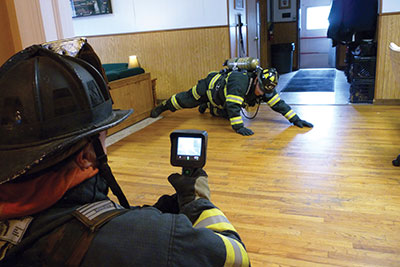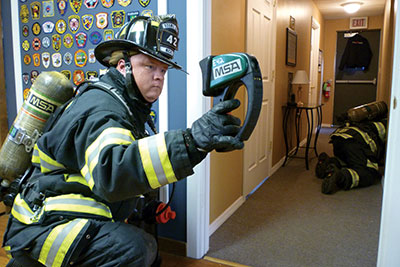
Tim-Bits: October 2014
Tim Llewellyn
Features Structural TrainingThis edition of TimBits takes some of the lessons from the truck-company operations classroom series and boils them down into a short primer.
This edition of TimBits takes some of the lessons from the truck-company operations classroom series and boils them down into a short primer. The focus is on primary searches and how to make them more effective, and also how to keep firefighters safer.
The techniques are not groundbreaking; rather, they’re an accumulation of best ideas from successful and busy companies. These techniques are not necessarily taught in the recruit and pre-service academies, and by no means am I advocating that new firefighters jump right to these practices. First, learn and master the basics, then move toward advanced methods, under guidance from trained and experienced firefighters.
When performing primary searches, firefighters always need to go into the structure with a plan of attack. Obviously, the search starts immediately inside the entry door, but where does it go from there? The search plan is dictated by the location of the fire. The rooms and the hallway immediately adjacent to and on the same floor as the fire are the areas with the greatest hazards; the search needs to start in these areas.
 |
|
| Photo 1: The officer of the crew (in the oriented position) uses a thermal-imaging camera to keep track of and direct the firefighters searching the room. |
|
 |
|
| Photo 2: The thermal-imaging camera should also be used to monitor fire conditions in areas adjacent to the search team. Photos by Tim Llewellyn Advertisement
|
Upon entering, firefighters should search the common pathways from the entry door to the fire area. Once in the area of the fire, search the spaces close to the fire first, and then move to rooms farther away from the fire. If you are ordered to perform a search above the fire floor, figure out from the outside as you are entering where the fire is located. Once you get to the floor above the fire, proceed immediately to the area directly above the fire and start the search there; continue to search away from the area directly above the fire.
In recruit school, we were taught to perform searches by holding onto the wall as we made our way around the room; each firefighter would stagger behind the lead firefighter, extending outward while holding onto the firefighter up front. This is an effective way to search, but it is not very efficient. A more efficient way to search rooms is by using the oriented-search technique. Oriented searching involves one firefighter holding a position – this is called the oriented position (typically at the door or entrance to the room, or on a hoseline) – while the other firefighter(s) is directed into the room or area to search. Proponents of this technique strongly encourage the oriented firefighter to carry and use a thermal-imaging camera (TIC) to keep track of and direct the searching firefighters to areas outside of the camera’s range. The oriented firefighter – who is usually the officer of the crew – can not only keep track of the firefighters better with a TIC, but can also continuously monitor the fire conditions and other fire-ground activities.
The firefighters going into the room to search should leave their tools on the ground near the oriented firefighter; this frees their hands so they can search more effectively. If the tools are needed, they can easily be retrieved.
In training, we too often set ourselves up for failure by learning and practising searches in large, open, unfurnished rooms with stiff mannequins as victims. We are told that we can “extend the search” by using tools to probe the darkness. In training, if our tools run into something stiff in the concrete-block room, we know that we have reached the victim and we have achieved the goal of the training exercise. But searching does not work this way in furnished houses. Could you tell the difference between a 10-kilogram (22-pound) toddler and a foam dog bed on a thickly carpeted floor at the end of a Halligan bar with zero visibility? Probably not. It is more likely, in fact, that you will not feel either the toddler or the dog bed through the resistance of the Halligan on the carpet. Fire victims are found with hands, not tools.
When firefighters finish the search and exit the room, they can retrieve their tools and carry them to the next work area. If a searching firefighter finds and extricates a victim, then he or she knows that the tools have been left in a known location and can be retrieved later. The main idea behind this modification is for firefighters to use their hands to search for and save lives, not to drag tools.
Try these ideas in training to see if they work for your department. If they do, pass them on to a friend. Now let’s go practise realistic searches!
A fire-service veteran since 1989, Tim Llewellyn is a firefighter for the Allegheny County Airport Authority in Pittsburgh, Penn. He volunteers for the Adams Area Fire District in Pennsylvania and is an instructor for the PA State Fire Academy, the Allegheny County Fire Academy and the Pittsburgh International Airport fire training facility. Email him at llewllyn.fire@gmail.com
Print this page